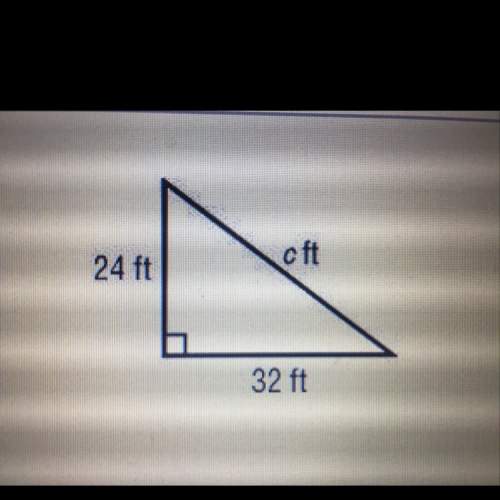
Mathematics, 28.09.2020 14:01 mstahuggoo6102
A student used the following elevations in a calculation.
• Mt. Everest: 29,035 feet above sea level • Dead Sea: 1,349 feet below sea level
The student said the distance between the two elevations was 27,686 feet. Why is the student's calculation incorrect?
The student added a positive 29,035 and a positive 1,349 instead of subtracting a positive 1,349 from a positive 29,035
The student subtracted a positive 1,349 from a positive 29,035 instead of subtracting a negative 1,349 from a positive 29,035.
The student added a positive 29,035 and a negative 1,349 instead of subtracting a positive 1,349 from a positive 29,035.
The student subtracted a positive 1,349 from a negative 29,035 instead of subtracting a negative 1,349 from a positive 29,035


Answers: 3
Another question on Mathematics

Mathematics, 21.06.2019 19:00
The length of a rectangular piece of land is 92 yards more than three times its width. the perimeter is 760 yards. find its dimensions.
Answers: 1

Mathematics, 21.06.2019 20:00
In new york city at the spring equinox there are 12 hours 8 minutes of daylight. the longest and shortest days of the year very by two hours and 53 minutes from the equinox in this year the equinox falls on march 21 in this task you use trigonometric function to model the hours of daylight hours on certain days of the year in new york city a.what is the independent and dependent variables? b.find the amplitude and the period of the function. c.create a trigonometric function that describes the hours of sunlight for each day of the year. d. graph the function you build in part c. e. use the function you build in part c to find out how many fewer daylight hours february 10 will have than march 21. you may look at the calendar.
Answers: 1

Mathematics, 21.06.2019 21:30
In a test for esp (extrasensory perception), a subject is told that cards only the experimenter can see contain either a star, a circle, a wave, or a square. as the experimenter looks at each of 20 cards in turn, the subject names the shape on the card. a subject who is just guessing has probability 0.25 of guessing correctly on each card. a. the count of correct guesses in 20 cards has a binomial distribution. what are n and p? b. what is the mean number of correct guesses in 20 cards for subjects who are just guessing? c. what is the probability of exactly 5 correct guesses in 20 cards if a subject is just guessing?
Answers: 1

Mathematics, 21.06.2019 22:00
Find two numbers if their sum is 91 and the ratio is 6: 7?
Answers: 1
You know the right answer?
A student used the following elevations in a calculation.
• Mt. Everest: 29,035 feet above sea leve...
Questions


Biology, 08.03.2021 16:00

History, 08.03.2021 16:00




Mathematics, 08.03.2021 16:00

Geography, 08.03.2021 16:00



Social Studies, 08.03.2021 16:00

Physics, 08.03.2021 16:00

History, 08.03.2021 16:00


Mathematics, 08.03.2021 16:00



Mathematics, 08.03.2021 16:00

Geography, 08.03.2021 16:00

Health, 08.03.2021 16:00




